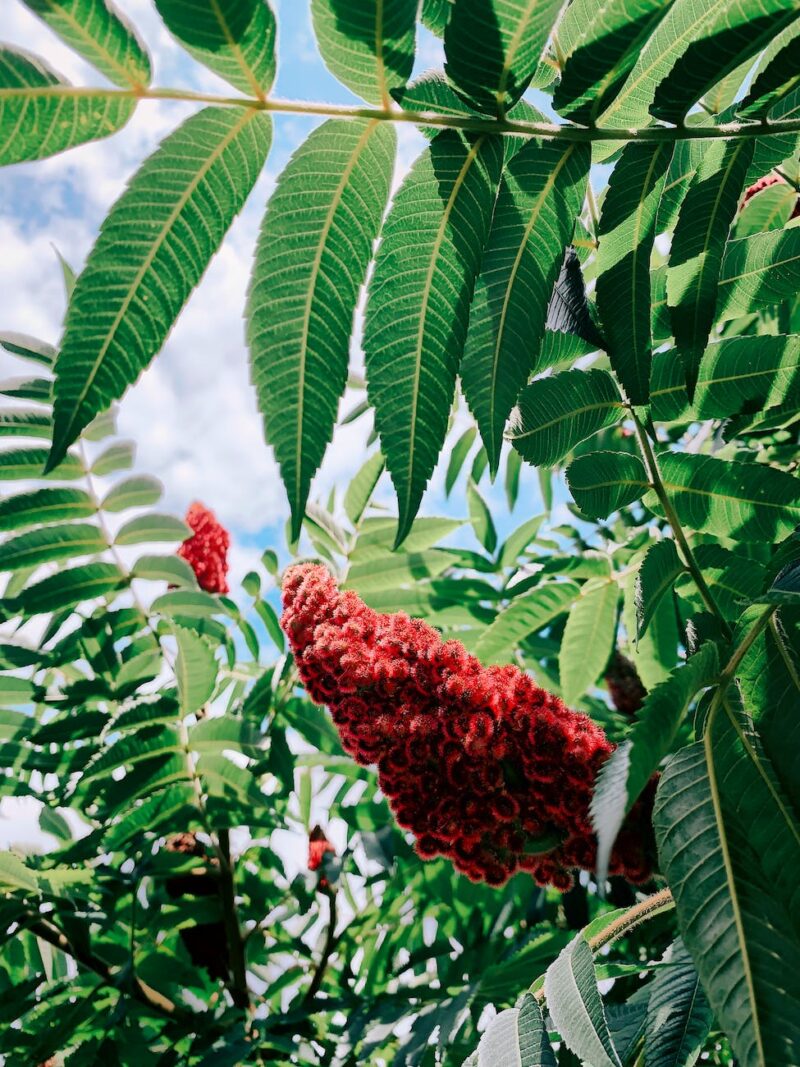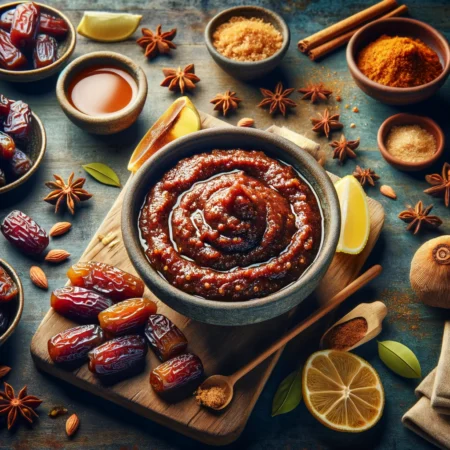Imagine walking through the bustling markets of ancient Egypt. Amid the vibrant tapestry of scents, sights, and sounds, a distinct tangy aroma beckons. Following your nose, you come across a vibrant, deep-red spice. This dear traveler, is sumac, the Mediterranean’s gift to the culinary world.
A zesty dance of citrus notes, sumac is more than just a flavor enhancer—it’s a tale that stretches across time and cultures. Hailing from the Anacardiaceae lineage, which boasts relatives like cashews and mangoes, sumac isn’t just familiar to our palates but also has deep roots in human history.
Visualize a small tree or shrub, standing 5-10 feet tall, its slender branches swaying, adorned with green leaves that undergo a fiery transformation in autumn, turning shades of red and purple. But the real magic lies in its berries—small, round, and bursting into vivacious red as they ripen. This is the heart of sumac spice. Harvested meticulously, dried under the golden sun, and ground into a powder, this spice carries the hues of sunsets and the essence of zesty earthiness.
Our journey with Sumac begins in the time of pharaohs. Ancient Egyptians, in their vast wisdom, recognized not just the culinary but also the medicinal virtues of this spice. As time flowed, the Greeks and Romans embraced it, making it an irreplaceable part of their feasts. Fast forward to the Middle Ages, and Europe was under its tangy spell, using it to invigorate stews and mask the less pleasant nuances of spoiled foods.
As we glide into the present, sumac stands tall and proud on the global culinary stage. From the fragrant kebabs of the Middle East, and the hearty stews of the Mediterranean, to the refreshing salads of Greece and Turkey, sumac has seasoned them all. But its gifts don’t stop at tantalizing our taste buds. Packed with antioxidants, with whispers of anti-inflammatory prowess, sumac has been the silent healer in traditional medicine, addressing digestive woes and soothing troubled skin.
Beyond the kitchen and apothecary, the fiery red berries have also kissed fabrics, lending them rich dyes and resonating with the age-old traditions of craftsmanship.





